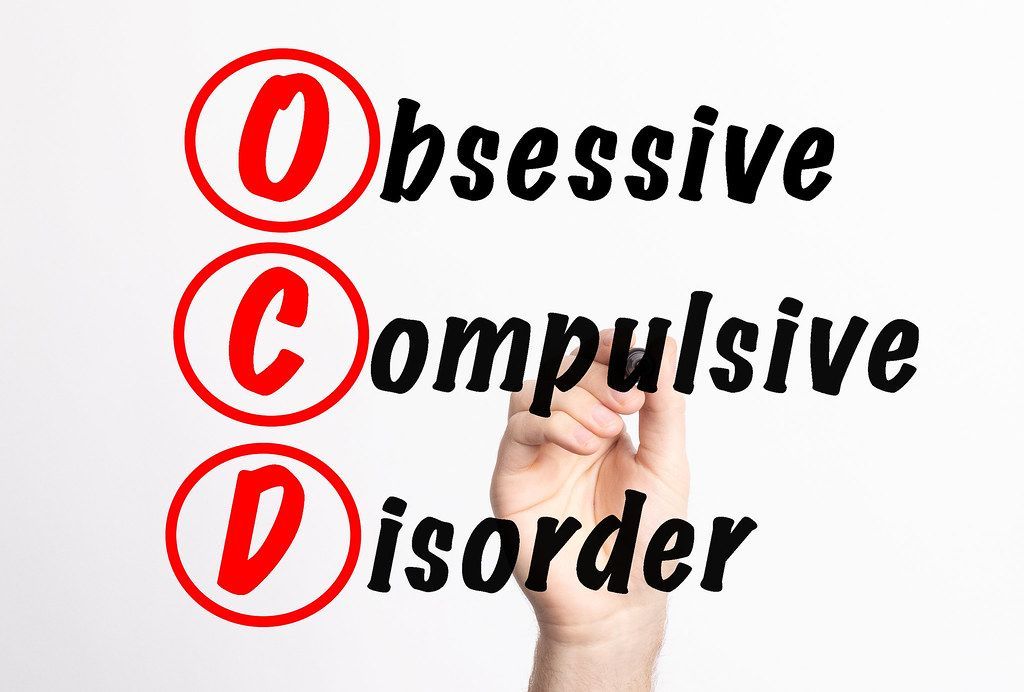What is Obsessive-Compulsive Disorder?

Obsessive-Compulsive Disorder is defined by obsessive thoughts and compulsive behaviors that interfere with a person’s normal routines, daily functioning, or relationships with others. They are distressing to the one who suffers from OCD and they are time-consuming.
Obsessions are persistent thoughts, ideas, impulses, or images that cause anxiety and worry. The person feels that the thoughts are not within his or her control and that the thoughts are not normal. The person suffering from obsessions knows that these thoughts come from within and are not imposed from an outside source.
Compulsions are repetitive behaviors performed in response to obsessive thoughts in order to relieve anxiety or worry. The discomfort of an obsessive thought compels the sufferer to want to contain or neutralize the discomfort by engaging in some ritualistic behavior. These compulsions can be mental acts, such as counting, praying, repeating words silently, or repetitive behaviors such as checking, hand washing, or putting objects in order. People with OCD do not experience pleasure from performing these behaviors they engage in them in order to avoid some dreaded consequence, such as harm that might come to others or to themselves, if they do not perform the rituals.
To qualify as obsessive-compulsive disorder, the person recognizes that the obsessions or compulsions are excessive or unreasonable. They cause marked distress, are time-consuming (taking up at least one hour per day), and significantly interfere with the person’s normal routine, work or school functioning, or usual social activities or relationships.
OCD is not the same as substance abuse, compulsive gambling, an eating disorder, or superstitious behavior. It is important to realize that OCD is not the same as Obsessive-Compulsive Personality Disorder, which is a tendency that some people have to be perfectionists. These people like having order and some rigidity in their lives. People with OCD, on the other hand, are disturbed by their ritualistic patterns.
The onset of OCD is usually gradual, although in some cases, people have reported a sudden onset. When a person has a biological predisposition to OCD, it can be triggered off by stress at home, with a relationship, with friends, or on the job. It is often associated with major life transitions, such as pregnancy, leaving home for the first time, increased levels of responsibility, or health problems.
OCD is linked to anxiety. Not only do the obsessions and compulsions cause the person great anxiety, but they may actually be the way a person alleviates anxiety. When victims of this disorder experience anxiety, they find structure and a degree of comfort in repeating the same thoughts or behaviors over and over again. But engaging in these thoughts and behaviors seems itself to cause further anxiety. This becomes an endless cycle in which the person truly feels trapped.
Some OCD Statistics
About 20% of the people with this disorder have only obsessions or compulsions (but not both), and the remaining 80% experience both obsessions and compulsions. Most people who have obsessive-compulsive disorder will show symptoms prior to the age of 25; only 15% of all OCD sufferers will first show signs after the age of 35. About 15 to 20% have a family member who also suffers from this disorder.
Approximately 70% of those with OCD will suffer from a major depression at some point in their lives. There is a slightly higher incidence of OCD in women if it first appears during adolescence. However, if it first shows itself in childhood, boys with OCD outnumber girls by about two to one. What these statistics show is that if you suffer from OCD, you are not alone. People with OCD keep it a secret, so we don’t usually realize how many of the people have it.
Additional Resources:
https://fvinstitute.com/what-about-depression/
https://fvinstitute.com/understanding-personality-disorders/
https://fvinstitute.com/the-two-faces-of-anxiety/
https://fvinstitute.com/suffering-and-then-recovery/
https://fvinstitute.com/stress-and-anxiety-disorders/
https://fvinstitute.com/social-anxiety-overcoming-shyness/
https://fvinstitute.com/sleep-sleep-disorders/
https://fvinstitute.com/resilience-the-ability-to-bounce-back/
https://fvinstitute.com/punctuality-getting-there-on-time/
https://fvinstitute.com/ocd-obsessive-compulsive-disorder/
https://fvinstitute.com/manipulation-in-relationships/
https://fvinstitute.com/a-regular-checkup-is-good-for-the-mind-as-well-as-the-body/



